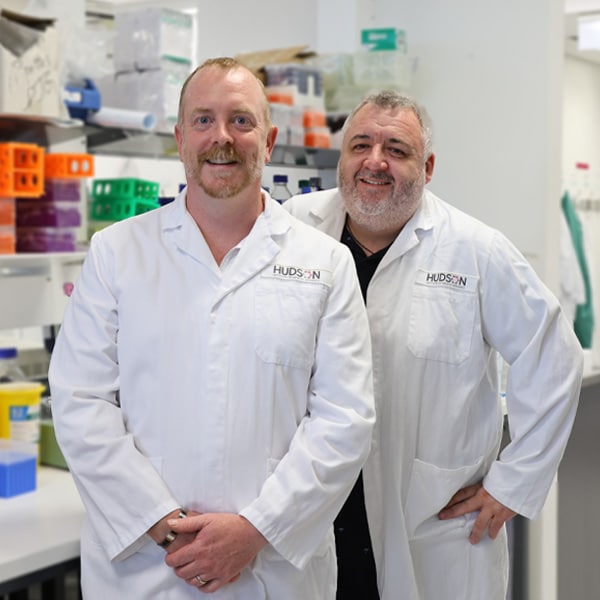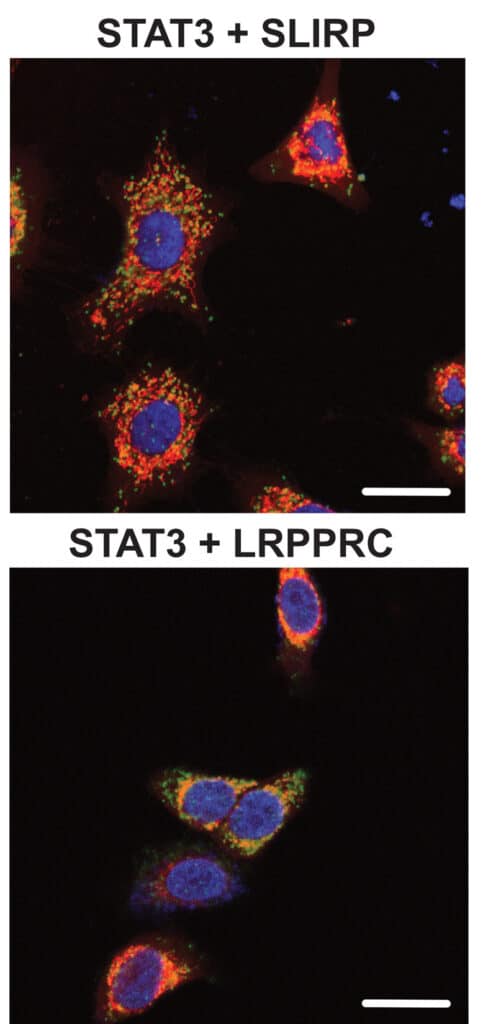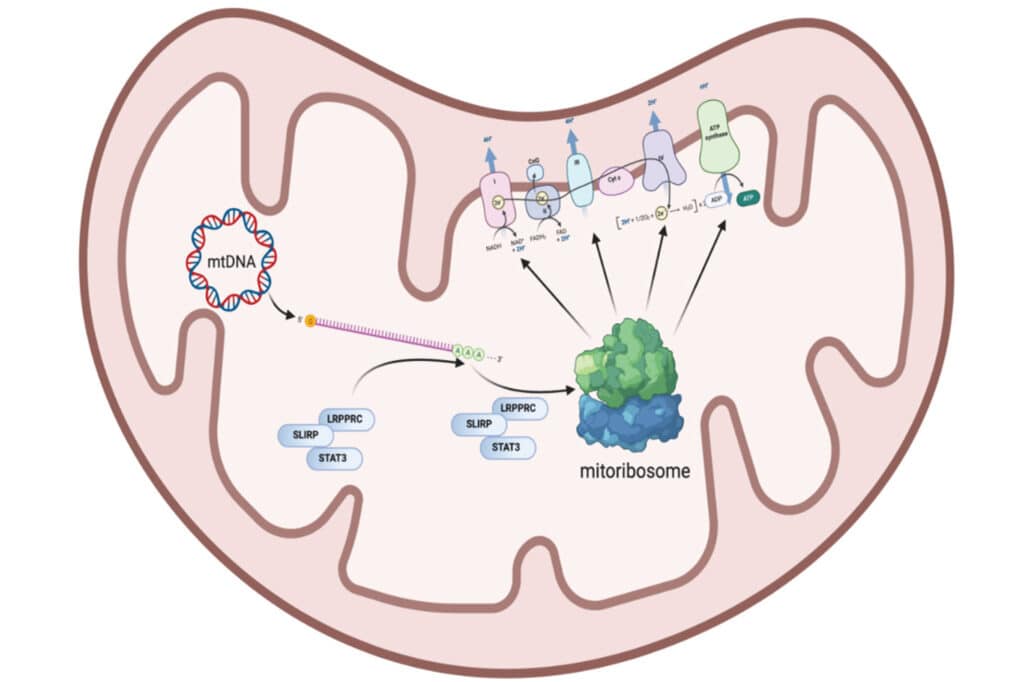Ten years of research has revealed a vital secret to how cancer cells work, and has opened the door to potential new treatments.

Associate Professor Daniel Gough and his team at Hudson Institute have now identified the processes that cancer cells use to create the energy they need to grow, paving the way for the creation of entirely new cancer treatments that could stop it in its tracks.
Their latest research, published in the eminent journal Cell Reports, focuses on a particular protein called STAT3.
"STAT3 has been known to be a potent cancer driver for 30 years, but its function was all thought to be in the nucleus, controlling the way genes are turned on and off," said A/Prof Gough.
How cancer cells create energy
"Back in 2009 we established that STAT3 had a crucial role in energy production by entering the mitochondria - the powerhouse of the cell - regulating energy production directly.
"Cancer cells use different metabolic pathways from normal cells to create the energy they need, the pathway we identified is a critical cog in this process."
A/Prof Gough's research has shown that this alternate pathway is significantly increased in the most common form of lung cancer, so it opens new potential for different cancer treatments.
"In theory it should be beneficial to any tumour - anything that's fast-dividing," he said.
"Conceptually, it could be very impactful on many tumour types once we work out how to manipulate that pathway.
"It's been a 10-year odyssey to try and understand the mechanism of how this protein works in this completely different context.
Taking cancer discovery research to clinics
Co-corresponding author Dr Daniel Garama believes it's an excellent example of the importance of fundamental, or discovery, research: "Without fundamental research we can't do translational research, which is taking the research discovery to clinics and patients."
"Now that we understand the fundamental process, either we or someone else can come along and say, 'this is how it works, and this is how we might be able to manipulate it.'"

Altered metabolism common to all cancers
This study shows the importance of the protein complex identified for tumours to grow and that the abundance of this complex is significantly increased in lung cancer patient tissue when compared to normal lung tissue.
"The focus was on lung adenocarcinoma which makes up about 40 per cent of all new lung cancer diagnosis. However, this altered metabolism is common to all cancers, "said A/Prof Gough.
"While only lung cancer was directly assessed in in this study, it is likely to be important in all cancers," he said.
Next steps - developing cancer therapies
The team will answer whether these agents will be effective cancer therapies.
"From a fundamental biology point of view, we will focus on the structure of this protein complex - to understand how drugs will interact with it," he said.
"From a therapeutic point of view, this protein complex is required for a specific biological process within the mitochondria (the stability of RNA), so it could be possible to inhibit this process with existing drugs. A/Prof Gough said.
STAT3 facts
- STAT3 is a critical signalling protein that is essential for life.
- When activated, STAT3 initiates hundreds of genes necessary for proliferation, immune function, apoptosis, metabolism, and differentiation.
- STAT3 activity is tightly controlled – too little activation results in immune disorders, while overaction is observed in more than 50 per cent of tumours and correlates with poor prognosis.
- It is now emerging that in some tumour types, STAT3 acts as a tumour suppressor, but this has not yet been explained.
BACKGROUND | STAT3's role in cancer
Cancer is a complex disease that affects millions of people worldwide. Despite advancements in treatment and research, cancer remains a leading cause of death globally. One of the key factors in cancer progression is the activation of the STAT3 protein.
What is STAT3?
STAT3 (Signal Transducer and Activator of Transcription 3) is a protein that plays a crucial role in cell signalling and gene expression. It is a member of the STAT family of proteins, which are transcription factors that regulate gene expression in response to various stimuli.
STAT3 is activated by a variety of cytokines and growth factors, including interleukin-6 (IL-6) family cytokines, epidermal growth factor (EGF), and leptin. Once activated, STAT3 forms a dimer and translocates to the nucleus, where it binds to specific DNA sequences and regulates the expression of target genes.
The role of STAT3 in normal cells
In normal cells, STAT3 plays a critical role in regulating cell growth, survival, and differentiation. It is involved in various cellular processes, including immune response, wound healing, and tissue regeneration.
STAT3 also plays a role in maintaining the balance between cell proliferation and cell death. It promotes cell survival by activating anti-apoptotic genes and inhibiting pro-apoptotic genes. This balance is essential for the normal functioning of cells and tissues. Indeed, STAT3 is required for life.
What is the role of STAT3 in cancer?

In cancer cells, STAT3 is often overactivated, leading to uncontrolled cell growth and survival. This overactivation can be caused by mutations in the STAT3 gene or by the activation of upstream signalling pathways.
One of the key roles of STAT3 in cancer is its ability to promote tumour cell proliferation. It does this by activating genes involved in cell cycle progression and inhibiting genes that regulate cell death. This results in the uncontrolled growth of cancer cells and the formation of tumours.
STAT3 also plays a crucial role in the tumour microenvironment, which is the surrounding environment of a tumour. It can promote the growth of new blood vessels (angiogenesis) and suppress the immune response, allowing cancer cells to evade detection and destruction by the immune system.
STAT3 has also been linked to cancer metastasis, the spread of cancer cells from the primary tumour to other parts of the body. It can promote the migration and invasion of cancer cells, allowing them to travel to distant sites and form new tumours.
Recently STAT3 has been linked to metabolism, or energy production. Cancer cells are rapidly dividing which places an increased demand on energy supply. STAT3 is required to meet this increased demand.






